Logistics
Warehousing & Fulfillment
Transportation
E-commerce
E-commerce Fulfillment Services
Lease & Maintenance
Semi Trucks
Supply Chain Technology
Logistics
E-commerce
Lease & Maintenance
Buy Used Trucks
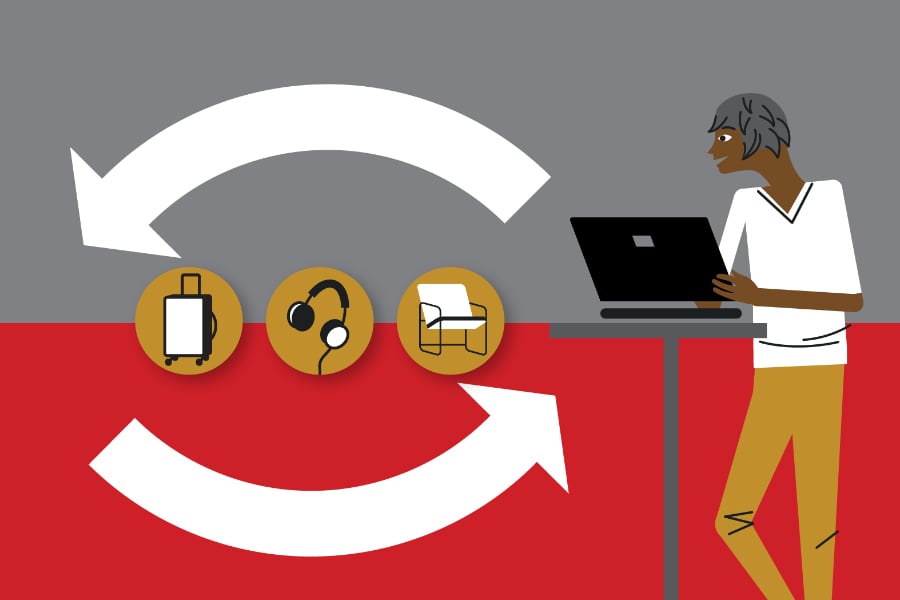
Thrifting is trendy. Vintage is trendy. But, do you know what else is trendy (and necessary)? Saving money.
Now more than ever, younger consumers are feeling the pressure of staying financially stable in an inflated economy. This means less non-essential spending and more bargain shopping for all.
For e-commerce brands, the current economy marks a pivotal change in consumer behavior. Shoppers aren't as inclined to buy items that are 'new.' Instead, they're exploring the resale retail space: trading in their own clothes for extra cash flow and buying pre-owned items at a good resale value. The results? More cash in their pockets to spend on essentials like groceries and commutes.
Yet many retailers aren't reaping the benefits of including a recommerce business model within their overall selling strategy. As the recommerce sector continues to grow, it could be costing not only their bottom line but their brand reach as well.
Recommerce is the practice of buying or re-selling pre-owned items at discounted rates through an online marketplace. Also known as resale commerce, recommerce marks the expansion of resale from solely brick-and-mortar stores into online marketplaces.
The resale business model isn't anything new (who among us hasn't hosted or attended a few garage sales?), but it has been growing and adopting new technologies quite quickly over the past few years, especially with the mass layoffs brought on by a pandemic and an unstable economy.
Why? Because resale continues to add value during uncertain times - it helps shoppers feel less "stuck," giving them an almost guilt-free option both financially and environmentally.
Picture this: you're searching for a nice frame for your apartment. Online, new frames could be selling for upwards of $60. However, stop at a local thrift store and you could score a used one for less than $10. The same goes for recommerce. What was once a $150 retail value item could be sold pre-owned or lightly used online for over 50% less than the original price.
In 2022, the stigma of purchasing pre-owned clothing or products is virtually gone. Not only is buying and selling used products better for the environment, but it can also help consumers save a good chunk of change over a year (around $1,760!)
Plus, amid fears of recession and the stress of inflation across every industry, 93% of consumers say higher prices affect their decision to buy or sell pre-owned products to save money. The results in 2022? Recommerce is truly on the rise.
Because recommerce revolves around buying and purchasing second-hand products, it leaves a positive impact on the environment.
Now more than ever, consumers are buying more products but keeping them for a shorter amount of time, which causes concern for an increasing amount of discarded textiles in landfills each year. The recommerce space helps avoid this by encouraging the recycling of clothing and other products to consumers.
When brands have a recommerce strategy in place, it speaks directly to their commitment to a more sustainable environment - a facet of every apparel brand's corporate social responsibility.
With inflation driving consumer prices higher than they've been in the past 40 years, shoppers are exploring cheaper options during difficult times as their purchasing power takes a hit. For e-commerce brands, it's vital to continue to meet customers where they're at - in this case, meeting them with lower price points.
Offering a recommerce division that showcases used devices or apparel sold at value prices could be the deciding factor for a price-conscious consumer choosing between your brand and others. Even if they opt to buy new items rather than used ones, they'll still appreciate the option as well as your brand's effort. And when the economy picks back up, you will be much higher on their list.
There's a largely untapped audience within the broader retail market looking for recommence. A survey from First Insight found that over 60% of Gen Z and Millennial consumers prefer to buy from sustainable brands.
If your brand isn't developing some sort of resale strategy, you could be missing out on a plethora of potential customers, especially among the Gen Z crowd, who love thrifting and 'vintage' clothing not just for its aesthetic, but for its sustainability initiatives as well.
While recommerce is a business model that promotes sustainability in retail and product reuse, it's also another selling channel. And with an added channel comes additional revenue.
Whether a brand offers a trade-in where their customers can replace older products with newer ones, or they sell secondhand products directly through their own site, there is an expectation for brands to continuously evolve based on consumer demand - in this case cheaper, more sustainable options.
Peer-to-peer marketplaces connect consumers with other likeminded consumers to share products and/or services with each other.
Generalist
Generalist P2P marketplaces like eBay, Etsy, or Facebook Marketplace showcase an abundance of second-hand products within different verticals like apparel, electronics, jewelry, furniture, and home goods. These generalist P2P sites are sort of a catchall, so customers will need to do a bit of digging to find the products they want.
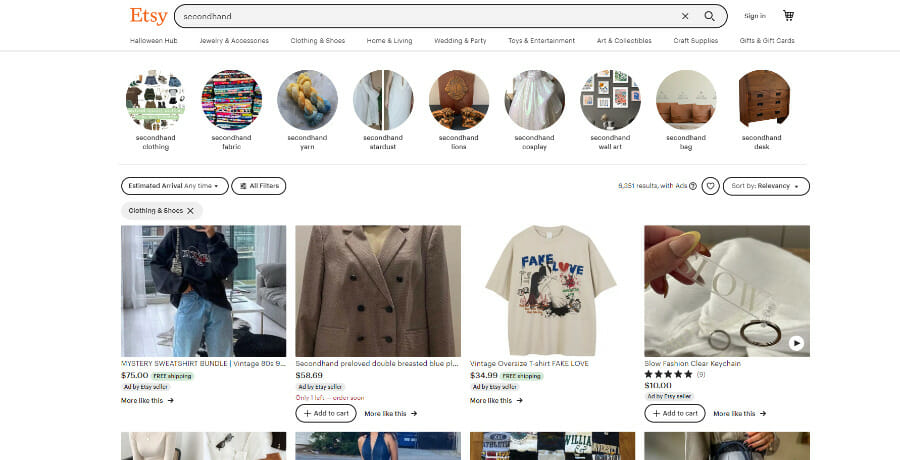
Specialist
Specialist peer-to-peer marketplaces focus on one vertical. P2P sites like Poshmark, ThredUP, and Depop are online consignment platforms that focus on fashion and apparel.
Poshmark and Depop work allows multiple sellers to exist on their platform, taking a bit of a social approach by showcasing the seller's profile (number of followers, activity status, and items sold).
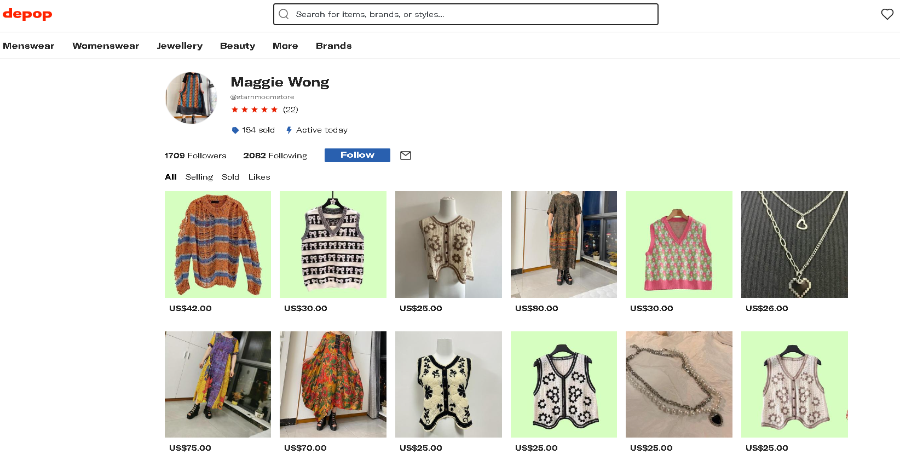
ThredUP, on the other hand, acts strictly as an online thrift store where information about the original owner isn't available and the focus is more on the product and brand name.
Managed recommerce solutions take a more in-depth approach than general or specialist peer-to-peer marketplaces due to the rigorous brand verification process that each product must go through as well as multiple buying options like tiered memberships, rentals, and purchasing.
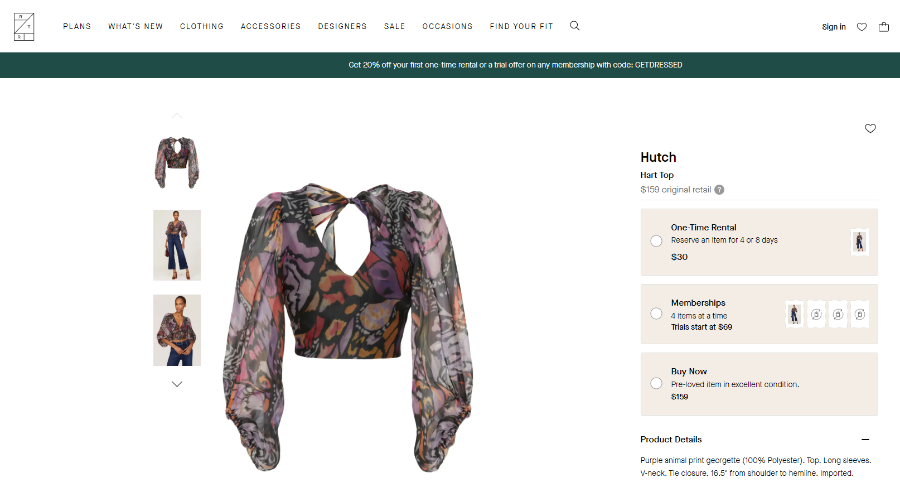
Additionally, when a product is purchased, it's shipped directly from the recommerce company, rather than the original owner or seller. There's more room for a fully branded experience for customers who purchase from managed recommerce sites.
Companies like Rent The Runway, The RealReal, and StockX have all found massive recommerce success authenticating and reselling thousands of luxury items across designer fashion at a competitive price.
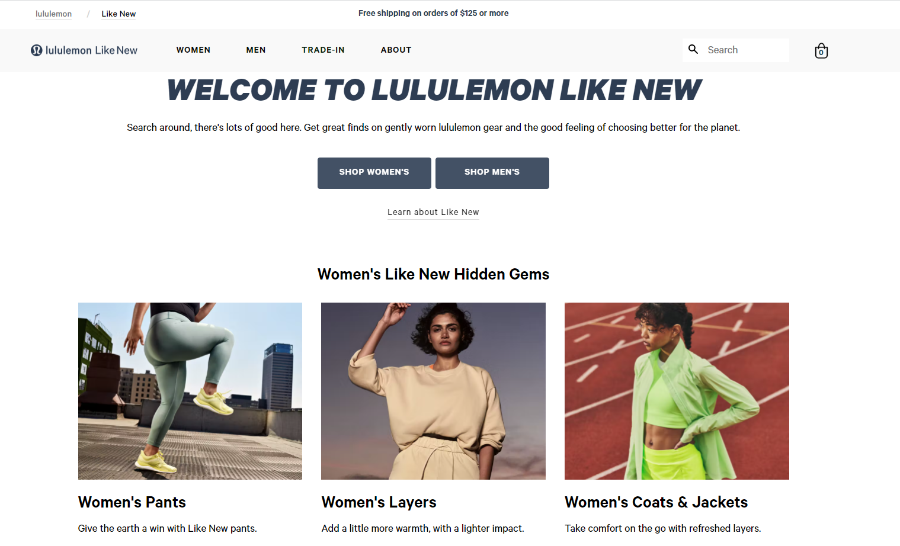
Perhaps the most convenient for e-commerce brands, the in-house recommerce route is beneficial for companies looking to keep everything under the same hat. Typically, an in-house recommerce program allows brands to sell "preloved" products through an extension of their site.
For example, Lululemon, Levi's, Patagonia, and Madewell all have simple clickable links to their recommerce businesses. There's a quick message that the customer is navigating away from the parent site, and then they're taken directly to more sustainable shopping.
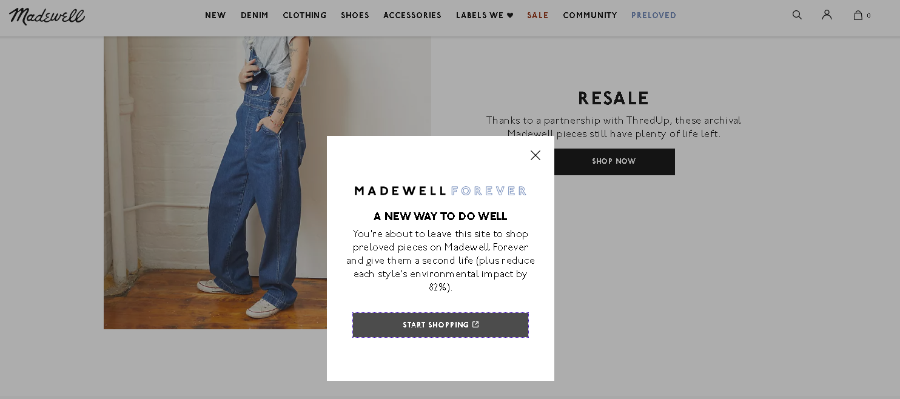
Another version of in-house recommerce keeps customers right on the website. Outdoor apparel brand houses both trade-in options and used clothing on a tab within their parent site.
Keeping recommerce in-house is extremely valuable for brands who don't want their customers navigating to any third-party channels, instead hoping to keep a consistent brand experience - one that includes quality upcycled apparel.
In an overly saturated e-commerce market, brands need to stay on the pulse of their audience to keep a competitive advantage - this includes innovating and changing with the times.
In today's particular economy, recommerce allows brands to deepen customer relationships by meeting their desires for more sustainable shopping and their need for cheaper options in the retail space.
Plus, a recommerce channel can point brands in the right direction and inspire future products that take a new spin on old designs as it provides customer data on browsing and purchasing decisions.
In addition to the customer-centric focus that recommerce facilitates, it also allows brands to take control of their branding, leaving less room for counterfeit products to make their way into the mainstream market.
Ultimately, consumers are looking for more channels and more seamless shopping. Recommerce provides a valuable secondary market for brands to connect with a niche group of consumers rather than miss out on them altogether.
With recommerce, the products aren't necessarily new or trending, which means their value goes down and it may take more sales to garner the same results as a channel that only sells brand-new products. Plus, brands who are focusing attention on recommerce may find it hard to keep pace with fast fashion companies, where trendy products are in and out each week.
While vintage apparel or used furniture may be appealing at a lower price point, the recommerce industry isn't well-suited for all product types. Therefore, companies choosing to develop a resale channel will need to do some research on their products to find the items that are most appealing for resale. For example, beauty products or intimate apparel isn't typically something consumers will want to buy second-hand.
Getting used merchandise up to par to resell requires an additional workflow of checking and reconditioning items through retail VAS. Used electronics will need to go through extensive tests to make sure they're up-to-speed. Lightly worn clothing will need to be inspected to make sure there's nothing that makes the piece unwearable. If your fulfillment operation is already short-staffed, it might be difficult to find the extra manpower to fuel recommerce success.
As we previously mentioned, not all products will work well for resale. Selling used products in a secondary market requires knowing which items are most likely to perform well, even though they are pre-owned. While many apparel items or furniture pieces can find a new life even after they've been used for a few years, electronics like cell phones or computers are harder to sell after a while due to new models and upgrade culture.
Additionally, make sure that any used products are clearly marked as such so that customers know exactly what they're getting and are less likely to return.
The superpower behind every seamless shopping experience? A modern tech stack. For brands looking to explore the recommerce market, there are a few ways they can get their used items on sale and into the hands of happy customers.
Either they'll need to create their own platform within their site or partner with an existing tech platform that can integrate and manage their recommerce inquiries. Recommerce requires brands to take a good look at their current site and integrations to find the best way to sell their preloved goods.
Recommerce is more than just selling used products. To get those products to customers, there's an entirely new workflow of receiving trade-ins, examining products to make sure they can be re-sold, reconditioning, packing, and shipping out to the end consumer. Oh, and don't forget any returns that may occur.
Brands offering a recommerce channel will need to have standard operating procedures in place for these types of transactions - and they may look very different from your standard e-commerce SOPs.
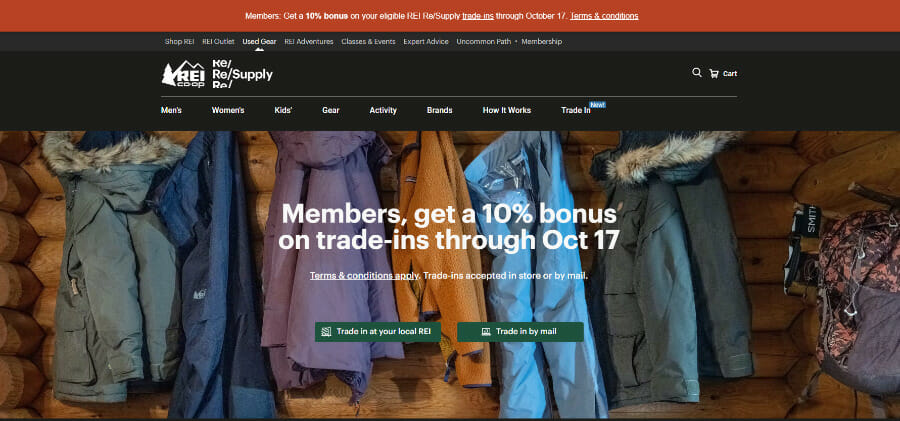
Instead of launching a recommerce channel immediately on your site for all to see, it may be a good idea to have a soft launch for your most loyal members to test the waters and get some genuine customer feedback. This could look like offering reward points or a gift card as a benefit when loyalty program members trade in their products.
With the rise of macro and micro-influencers, social media has become a sort of hub for top trending fashion styles. While smaller shoulder handbags are in this month, they may be deemed "cringe" next month.
Brands will need to continuously keep the pulse on what's "in" and what's "out" by keeping up with the most popular fashion accounts and influencers. From there, they can carefully curate preloved products that are "in" for greater reach and sales boost.
As the recommerce industry continues to grow, the question for brands remains: offer trade-ins and sell used products... or not?
While there are many benefits to recommerce, the answer is different for every business. It comes down to this: the products you're selling, the customers you're serving, and your logistics operation.
For brands who are looking to expand their e-commerce fulfillment and keep pace with changing consumer demand, recommerce could be the perfect next move to a more robust business - one that offers discounted rates along with sustainable shopping.